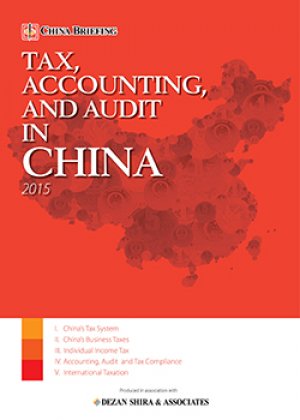Comparing Hong Kong and Singapore Accounting Standards
 By Xu Zhijun
By Xu Zhijun
Being dubbed as two of the Asian Four Small Dragons, Hong Kong and Singapore have been in constant competition with each other to be the easiest place to do business. The two rivaling cities have each attracted large amounts of foreign investment over the years with their geographical advantages and open attitude to free trade, as well as strong infrastructure and favorable business policies.
With the rule of law firmly established in both cities, staying in compliance with local regulations is key. Among these is the requirement to file financial statements in accordance with local accounting standards. In an effort to appeal to foreign investors, these standards are largely aligned with internationally accepted standards: the International Financial Reporting Standards (IFRS), issued by the International Accounting Standards Board (IASB).
That said, some differences between accounting practices in Hong Kong and Singapore remain. In this article we will explore which regulations apply in each city and how these compare to the IFRS.
Accounting Standards of Hong Kong
Hong Kong adopted its latest version of the Financial Reporting Standards (HKFRS) in January 2005. They comprise of the Hong Kong Accounting Standards (HKAS), its Interpretations and the Hong Kong Financial Reporting Standards. These are issued by the Hong Kong Institute of Certified Public Accountants (HKICPA). The HKFRS is comprised of 41 accounting standards, 9 financial reporting standards and several other interpretations. Each standard explains a specific topic such as inventories, intangible assets and financial instruments.
In addition, the HKICPA issued a simplified set of standards for small and medium-sized companies, known as the SME Financial Reporting Standards (SME-FRF) and SME Financial Reporting Framework (SME-FRF).
In Hong Kong, the SME-FRS, a simplified HKFRS with 17 accounting standards, is applicable for eligible small entities:
- the company has no public accountability;
- the annual revenue of the company is below 50 million in local currency;
- the total assets of the company are below 50 million in local currency;
- the company has a maximum of 50 employees
 RELATED: Tax and Compliance Services from Dezan Shira & Associates
RELATED: Tax and Compliance Services from Dezan Shira & Associates
Accounting Standards of Singapore
In Singapore, all companies with financial periods starting on or after January 1, 2003 have to comply with the Singapore Financial Reporting Standards (SFRS). The SFRS includes approximately 39 standards covering specific topics such as revenue recognition, property, plant & equipment, and financial instruments.
The Accounting Standards Council (ASC) of Singapore, preceded by the Council on Corporate Disclosure and Governance (CCDG), authorized small entities to use the Singapore Financial Reporting Standards for Small Entities in preparation of their financial reports in December 2010.
In Singapore, a qualified SME needs to meet the following criteria:
- SME is not publicly accountable;
- SME does not publish general-purpose financial statements for external users;
- SME’s total annual revenue exceeds no more than 10 million in local currency;
- SME’s total gross assets exceed no more than 10 million in local currency;
- SME’s total number of employees exceeds no more than 50 people.
Hong Kong compared to IFRS
Property, Plant and Equipment (PPE)
HKAS includes two additional transition provisions:
- Exempting certain entities that carried their PPE at revalued amounts before September 30, 1995 and have not revalued since that date from making regular revaluation.
- Allowing non-profit entities that previously took advantage of the exemption under SSAP (Statement of Standard Accounting Practice) to deem the carrying amount of an item of PPE as the cost of that item before applying HKAS.
Impairment of Assets
HKAS 36 paragraph 13 specifies that an entity shall apply HKAS 36 to the following assets:
- Goodwill and intangible assets acquired in business combinations for which the agreement date is on or after January 1, 2005
- Other assets prospectively from the beginning of the first annual period beginning on or after January 1, 2005
Intangible Assets
HKAS paragraph 130 specifies that an entity shall apply HKAS 38 to the accounting procedures for the following intangible assets:
- Intangible assets acquired in business combinations from which the agreement date is on or after January 1, 2005
- Other intangible assets prospectively from the beginning of the first annual period beginning on or after January 1, 2005
Financial Instruments Recognition and Measurement
Generally, HKAS 39 does not permit retrospective application, whereas IAS (International Accounting Standards) 39 allows retrospective application.
Investment Property
HKAS 40 paragraphs 80A on fair value model:
Para 80A of HKAS 40 applies to an entity that has previously applied SSAP 13 (2000) for non-leasehold investment properties. The entity must have chosen to use the fair value model to reflect the effect of applying HKAS 40 on its effective date (or earlier) as an adjustment to the opening balance of retained earnings for the period in which HKAS 40 is first applied. Paragraph 80A also encourages the entity to adjust the comparative information if the entity has previously disclosed publicly fair value of those properties. Paragraph 80A requires the entity to disclose the fact if otherwise.
HKAS 40 paragraphs 83A and 83B on cost model:
Paragraphs 83A and 83B of HKAS 40 allow an entity to take the carrying amount of the investment property under SSAP 13 (2000) as the deemed cost on the date that HKAS 40 is first applied. Any adjustments, including the reclassification of any amount previously held in revaluation reserve, are to be made to the opening balance of retained earnings. Depreciation on deemed cost commences from the opening balance sheet date.
![]() RELATED: China GAAP vs. U.S. GAAP and IFRS
RELATED: China GAAP vs. U.S. GAAP and IFRS
Singapore compared to IFRS
Property Plant & Equipment
SFRS 16 exempts regular revaluation of assets for which any one-off revaluation was performed between December 1, 1996 and December 31, 1996(both dates inclusive) or for assets that were revalued prior to January 1, 1984. Nevertheless, IAS 16 does not give such an exemption.
Investments in associates and joint ventures
Compared to SFRS 28, IAS 28 has a different method on this topic. Under IAS 28, a company does not have to account for its investments in associates and ventures using the equity method if its ultimate or any intermediate parent should produce consolidated financial statements that comply with IFRS and public use.
Impairments of assets – Recoverable amount disclosure for Non-financial assets
The amendment to SFRS 36 was issued to reverse unintended disclosure that become effective on January 1, 2013. It addresses the disclosure of information about the recoverable amount of impaired assets if that amount is based on fair value less costs of disposal. Based on the amendments, the recoverable amount is required to be disclosed only when an impairment loss has been recognized or reversed. In certain cases, the amendments also require that the following be disclosed if the recoverable amount is based on fair value less costs of disposal:
- The level of the fair value hierarchy within which the fair value measurement is categorized;
- The valuation techniques used for fair value measurement categorized within level 2 and 3 of the fair value hierarchy, and the key valuation assumptions.
Another point worth mentioning is that given the expected mandatory effective date of January 1, 2017 and 2018 for the revenue recognition and financial instruments projects, respectively, the Accounting Standards Council of Singapore has now decided to introduce a new financial reporting framework that is identical to IFRS for Singapore listed companies for annual periods beginning on or after January 1, 2018. This framework will also be made available for voluntary application by all non-listed Singapore-incorporated companies at the same time.
|
Asia Briefing Ltd. is a subsidiary of Dezan Shira & Associates. Dezan Shira is a specialist foreign direct investment practice, providing corporate establishment, business advisory, tax advisory and compliance, accounting, payroll, due diligence and financial review services to multinationals investing in China, Hong Kong, India, Vietnam, Singapore and the rest of ASEAN. For further information, please email china@dezshira.com or visit www.dezshira.com. Stay up to date with the latest business and investment trends in Asia by subscribing to our complimentary update service featuring news, commentary and regulatory insight.
|
![]()
 Tax, Accounting, and Audit in China 2015
Tax, Accounting, and Audit in China 2015
This edition of Tax, Accounting, and Audit in China, updated for 2015, offers a comprehensive overview of the major taxes foreign investors are likely to encounter when establishing or operating a business in China, as well as other tax-relevant obligations. This concise, detailed, yet pragmatic guide is ideal for CFOs, compliance officers and heads of accounting who must navigate the complex tax and accounting landscape in China in order to effectively manage and strategically plan their China operations.
Managing Your Accounting and Bookkeeping in China
In this issue of China Briefing, we discuss the difference between the International Financial Reporting Standards, and the accounting standards mandated by China’s Ministry of Finance. We also pay special attention to the role of foreign currency in accounting, both in remitting funds, and conversion. In an interview with Jenny Liao, Dezan Shira & Associates’ Senior Manager of Corporate Accounting Services in Shanghai, we outline some of the pros and cons of outsourcing one’s accounting function.
 Employing Foreign Nationals in China
Employing Foreign Nationals in China
In this issue of China Briefing, we have set out to produce a guide to employing foreign nationals in China, from the initial step of applying for work visas, to more advanced subjects such as determining IIT liability and optimizing employee income packages for tax efficiency. Lastly, recognizing that few foreigners immigrate to China on a permanent basis, we provide an overview of methods for remitting RMB abroad.
- Previous Article Nouvelles Mesures Fiscales Préférentielles pour les PME en Chine
- Next Article Understanding China’s Accounting Practice: Chinese GAAP vs. China’s Tax System





























